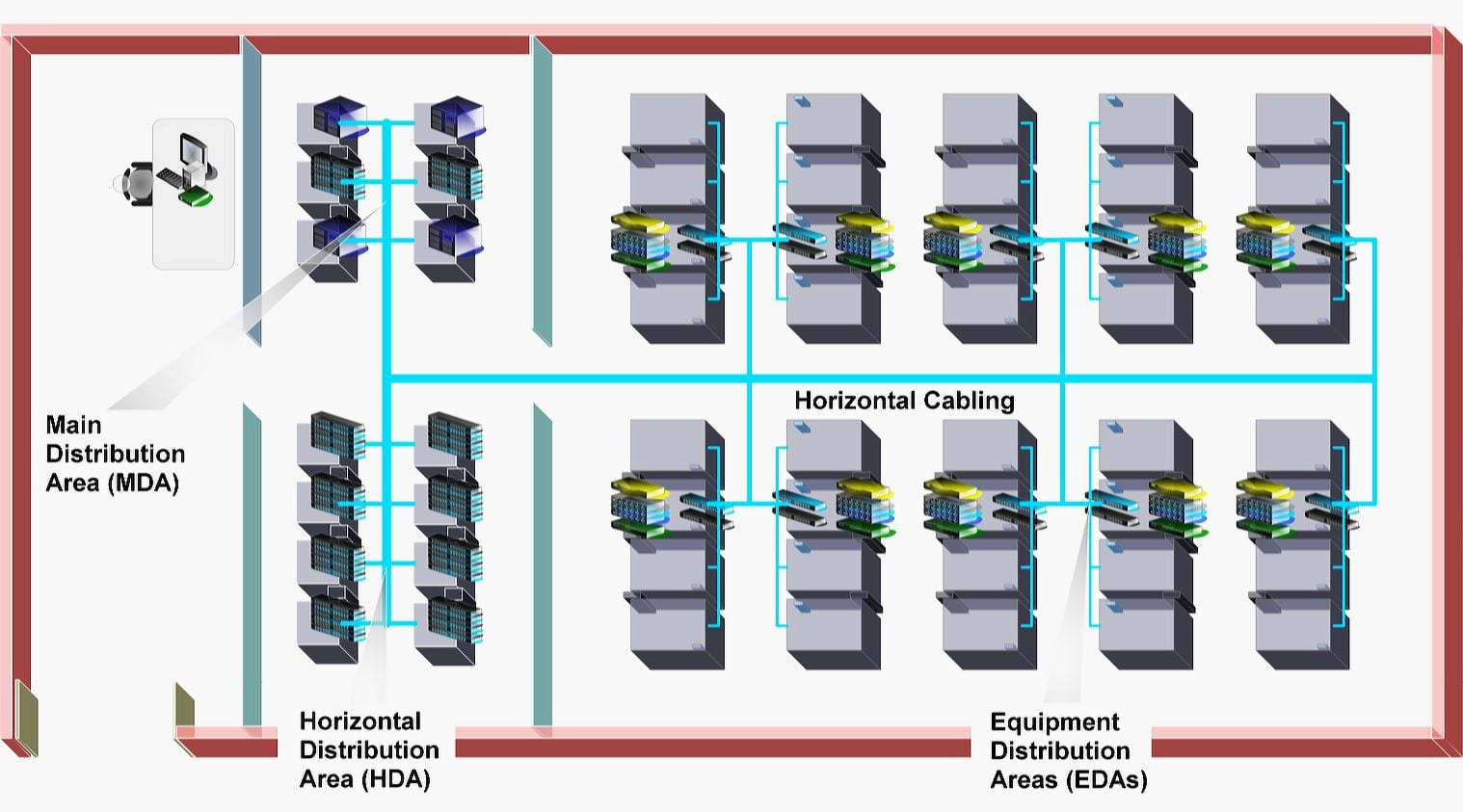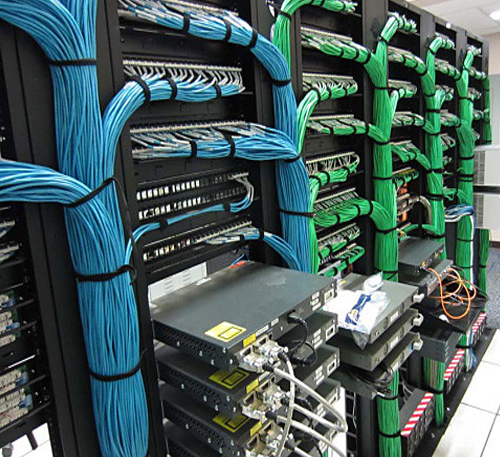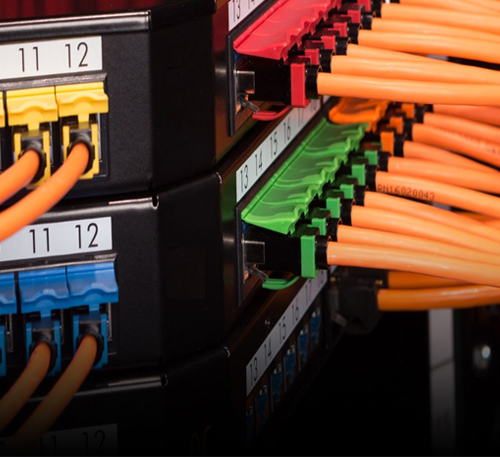Structured Cabling
In telecommunications, structured cabling is building or campus cabling infrastructure that consists of a number of standardized smaller elements (hence structured) called subsystems. Structured cabling components include twisted pair and optical cabling, patch panels and patch cables.
Structured Cabling DSI Dubai is the design and installation of a cabling system that will support multiple hardware uses and be suitable for today’s needs and those of the future. With a correctly installed system, current and future requirements can be met, and hardware that is added in the future will be supported.
We at DSI Dubai have helped countless companies of all sizes in Dubai, Sharjah & Ajman, from small startups to huge corporations, with personalized data cabling planning services. All our plans are tailor-made to your environment and your needs.
Technical Design Criteria
Our team of certified professionals at DSI Dubai provides the following design and installation services of structured cabling.
- Entrance facilities; the point where the telephone company network ends and connects with the on-premises wiring belonging to the customer.
- Equipment rooms house equipment and wiring consolidation points that serve the users inside the building or campus.
- Backbone cabling is the inter-building and intra-building cable connections in structured cabling between entrance facilities, equipment rooms and telecommunications closets. Backbone cabling consists of the transmission media, main and intermediate cross-connects and terminations at these locations. This system is mostly used in data centers.
- Horizontal cabling wiring can be standard inside wiring (IW) or plenum cabling and connects telecommunications rooms to individual outlets or work areas on the floor, usually through the wireways, conduits or ceiling spaces of each floor. A horizontal cross-connect is where the horizontal cabling connects to a patch panel or punch up block, which is connected by backbone cabling to the main distribution facility.
- Telecommunications rooms or telecommunications enclosure connects between the backbone cabling and horizontal cabling.
- Work-area components connect end-user equipment to outlets of the horizontal cabling system.
Web Application
A local area network (LAN) is a computer network that interconnects computers within a limited area such as a residence, school, laboratory, university campus or office building. By contrast, a wide area network (WAN) not only covers a larger geographic distance, but also generally involves leased telecommunication circuits. A LAN contains both hardware and software.
DSI Dubai has years & years of experience in vertical and horizontal connectivity projects spanning a wide variety of industrial and commercial network cabling applications, as well as expertise in all aspects of network topologies and LAN solutions such as: CAT 5e, CAT 6 and Fiber Optic network design. Whether upgrading current cabling networks, relocating offices or up-fitting facilities, Network Cabling Systems has the experience and capabilities to provide your IT staff with an accurate scope of work, bid drawings and RFP documents that will eliminate costly change orders as the project unfolds.

Premise Cabling
Understanding the characteristics of different types of cable and how they relate to other aspects of a network is necessary for the development of a successful network. Keeping in mind the above-mentioned key benefits of structured cabling, DSI Dubai team’s main focus includes;
- The architectural structure of your office
- Quality cable and connection products
- Cabling installation in professional manner
- Advanced equipment cabling installation supporting present and future
- Re-configuration of your already installed system
- Various technologies for customer requirements.

Why Structured Cabling
It’s Straightforward
Due to structured cabling systems, new machines or technology can easily be added to your IT environment. Moreover, in case of business growth or adding video conferencing, it can be done without daily interruptions. Structured cabling is totally organized, running to the top of the rack. Organized structured cabling minimizes the risk of human error and any accidental disruptions point-to-point can cause if there are too many cables. Plus, it just looks cleaner. Due to fiber optic cable length sprint, high standard noise resistance, and speed – this is the first choice for the business telephone system. A structured network cabling system is a sophisticated and optimal design that involves less maintenance and replacement thus saving money on wiring and cables in the long run.
In addition to being unsafe with messy and unorganized cables, there’s a higher chance of
- Fires
- Electrical Shocks
- Trips and falls
Seeing a mess of tangled wires by each and every electronic device is not a very pleasant sight. On the other hand, preplanned cabling systems are often hidden If they are visible, they’re neatly bundled and plugged into their respective machines. There’s no mess.
Cost Effective
Solves Issues Quickly
Aesthetically Pleasing
More Flexibility
It is easy to adapt to new changes, additions, and relocations with a structured cabling system. By doing this, you will be able to achieve better performance, which will translate into increased business growth. Additionally, it makes it easy to relocate to a new office because it reduces the installation time and increases adaptability.




